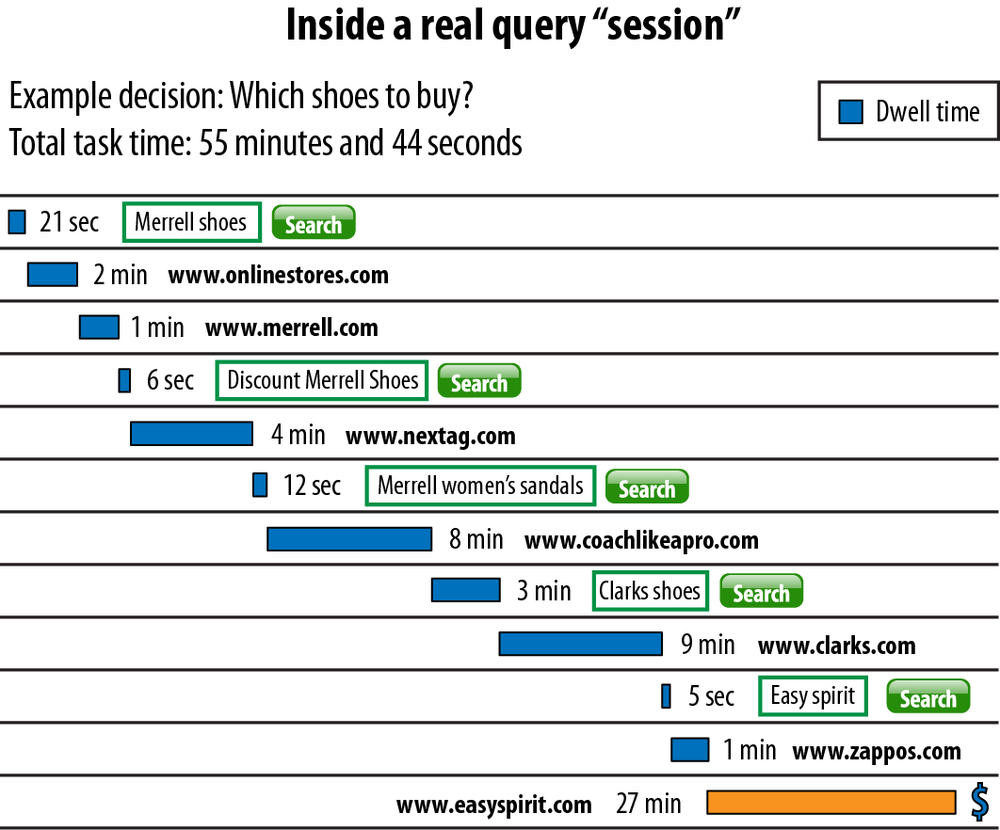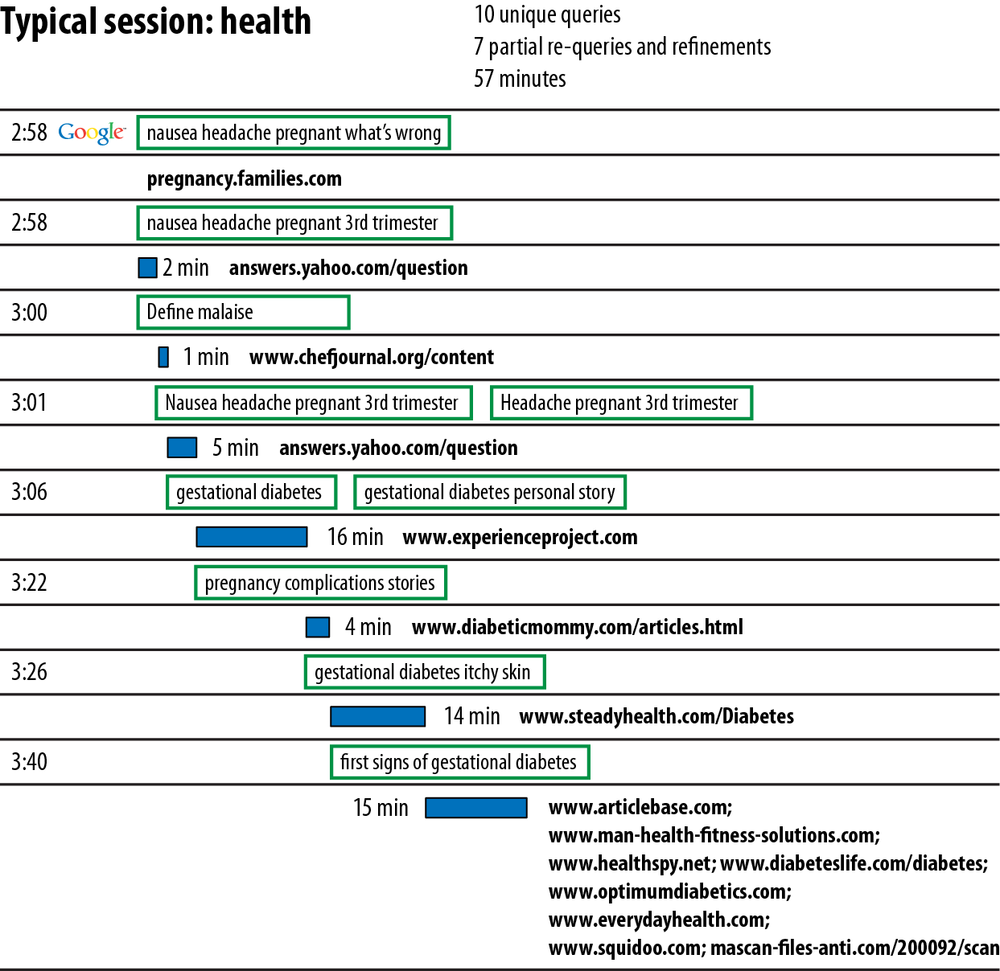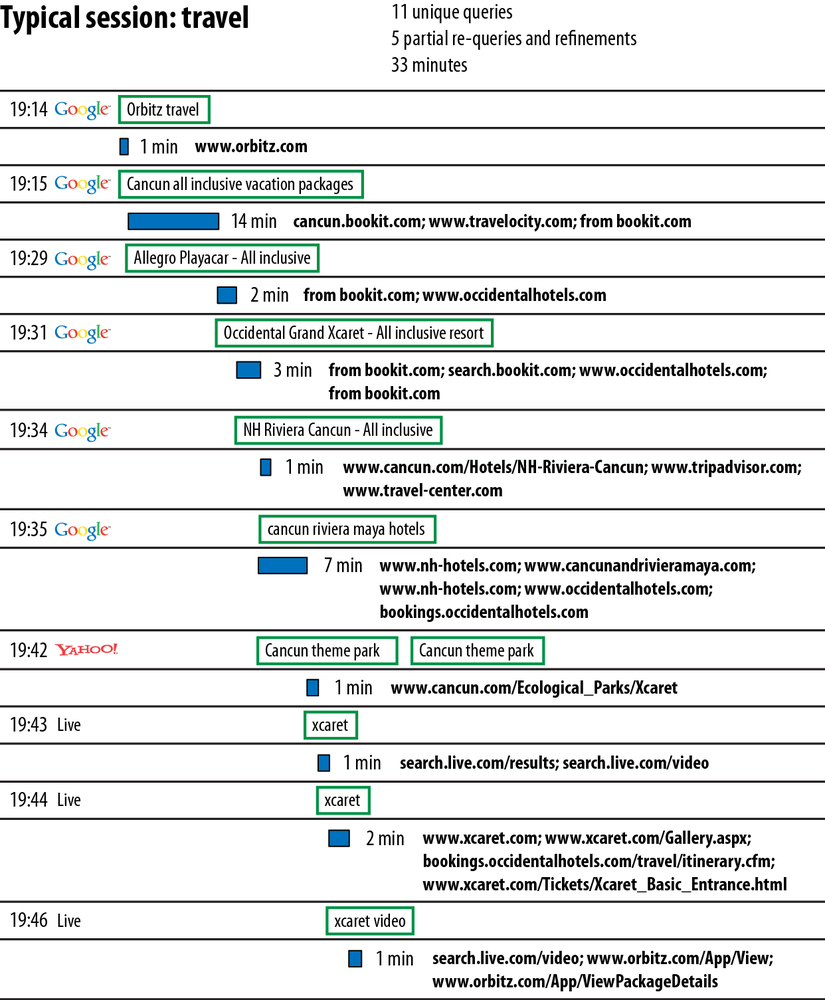Search engines invest significant resources into understanding how people use search, enabling them to produce better (i.e., faster, fresher, and more relevant) search engine results. For website publishers, the information regarding how people use search can be used to help improve the usability of a site as well as search engine compatibility.
Data from comScore provides some great insight into the types of things that people tend to search for. Table 1-4 shows a breakdown of many of the major categories that people’s Internet searches fall into, based on comScore data for August 2011.
Table 1-4. Searches by market segment
Parent category name | Total searches |
|---|---|
Directories/Resources | 2,789,625,911 |
Entertainment | 1,750,928,801 |
Retail | 1,686,123,715 |
Services | 1,288,400,837 |
Conversational Media | 837,067,182 |
Community | 653,405,269 |
Travel | 462,129,796 |
Health | 435,860,663 |
News/Information | 421,756,642 |
Sports | 297,503,391 |
This shows that people search across a very wide range of categories. Search engines are used to find information in nearly every area of our lives. In addition, user interactions with search engines can be multistep processes. Witness the user search session documented by Microsoft and shown in Figure 1-5.
In this sequence, the user performs five searches over a 55+ minute period before making a final selection. The user is clearly trying to solve a problem and works at it in a persistent fashion until the task is done.
However, it is increasingly common for search sessions of this type to take place over the course of more than one day. A 2007 study of ecommerce sites by ScanAlert showed that 30% of online transactions occurred more than 24 hours after the initial search (http://searchenginewatch.com/3626363).
The purchase cycle can sometimes involve a large number of clicks. Marin Software (http://www.marinsoftware.com) provided us with data on one consumer durable retailer (whose products represent high-cost, considered purchases) for whom 50% of the orders involved more than 10 clicks leading up to the conversion event.
For this particular retailer, when you look at the number of different ad groups that were clicked on in those 10 clicks, the clicks were mostly on the same keyword. In fact, for more than 75% of all conversions that came from multiple paid clicks, all the clicks were from the same ad group. Only 7% of conversions came from three different ad groups (and none from more than that).
Table 1-5 shows the average delay between the first click received by the site and the resulting purchase for this example retailer.
Table 1-5. Delay between first click and purchases
Delay between first click and purchases | Percentage of users |
|---|---|
Same day | 50% |
2 to 7 days | 9% |
8 to 30 days | 12% |
31 to 90 days | 26% |
More than 90 days | 3% |
This behavior pattern indicates that people are thinking about their tasks in stages. As in our Merrell shoes example in Figure 1-5, people frequently begin with a general term and gradually get more specific as they get closer to their goal. They may also try different flavors of general terms. In Figure 1-5, it looks like the user did not find what she wanted when she searched on Merrell shoes, so she then tried discount Merrell shoes. You can then see her refine her search, until she finally settles on Easy Spirit as the type of shoe she wants.
This is just one example of a search sequence, and the variety is endless. Figure 1-6 shows another search session, once again provided courtesy of Microsoft.
In this search session, the user has a health concern. This particular user starts with a five-word search, which suggests that she may have some experience using search engines. At 3:01 her search on headache pregnant 3rd trimester leads her to Answers.yahoo.com. After visiting this site, her search suddenly gets more specific.
She begins to focus on gestational diabetes, perhaps because something she saw on Answers.yahoo.com led her to believe she may have it. The session culminates in a search for first signs of gestational diabetes, which suggests that she has concluded that this is quite possibly the issue she is facing.
The session stops there. It may be that at this point the user feels she has learned what she can. Perhaps her next step is to go to her doctor with her concerns, prepared to ask a number of questions based on what she has learned.
Our next search session example begins with a navigational search, where the user simply wants to locate the travel website Orbitz.com (see Figure 1-7). The user’s stay there is quite short, and she progresses to a search on Cancun all inclusive vacation packages. Following that she searches on a few specific resorts and finally settles on cancun riviera maya hotels, after which it appears she may have booked her hotel—the final site visited on that search is Bookings.occidentalhotels.com, and the direction of her searches changes after that.
At that point, the user begins to look for things to do while she is in Cancun. She conducts a search for cancun theme park and then begins to look for information on xcaret, a well-known eco park in the area.
Users traverse countless different scenarios when they are searching for something. These example search sessions represent traditional PC interactions. Recent data from mobile search shows different behavior for mobile searchers, who are more likely to be close to completing a transaction. Data from a May 2011 eMarketer study showed that 55% of people visited a business they found in the search results after searching for information on their smartphone devices. Search engines do a lot of modeling of these different types of scenarios to enable them to provide better results to users. The SEO practitioner can benefit from a basic understanding of searcher behavior as well. We will discuss this in more detail in Chapter 2.
Get The Art of SEO, 2nd Edition now with the O’Reilly learning platform.
O’Reilly members experience books, live events, courses curated by job role, and more from O’Reilly and nearly 200 top publishers.




